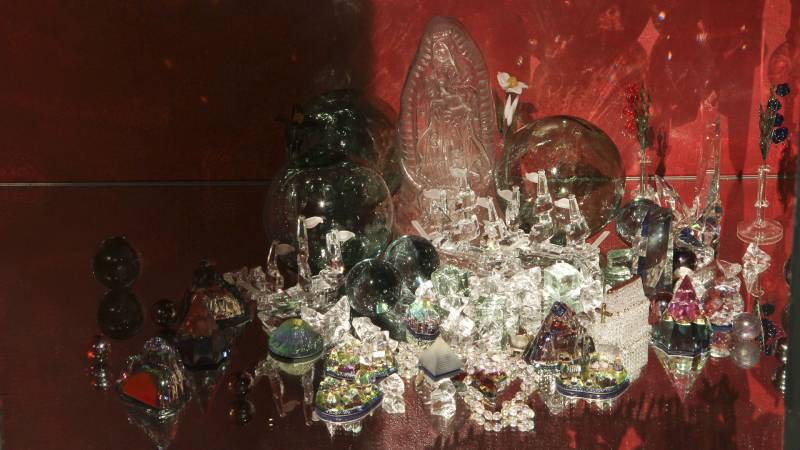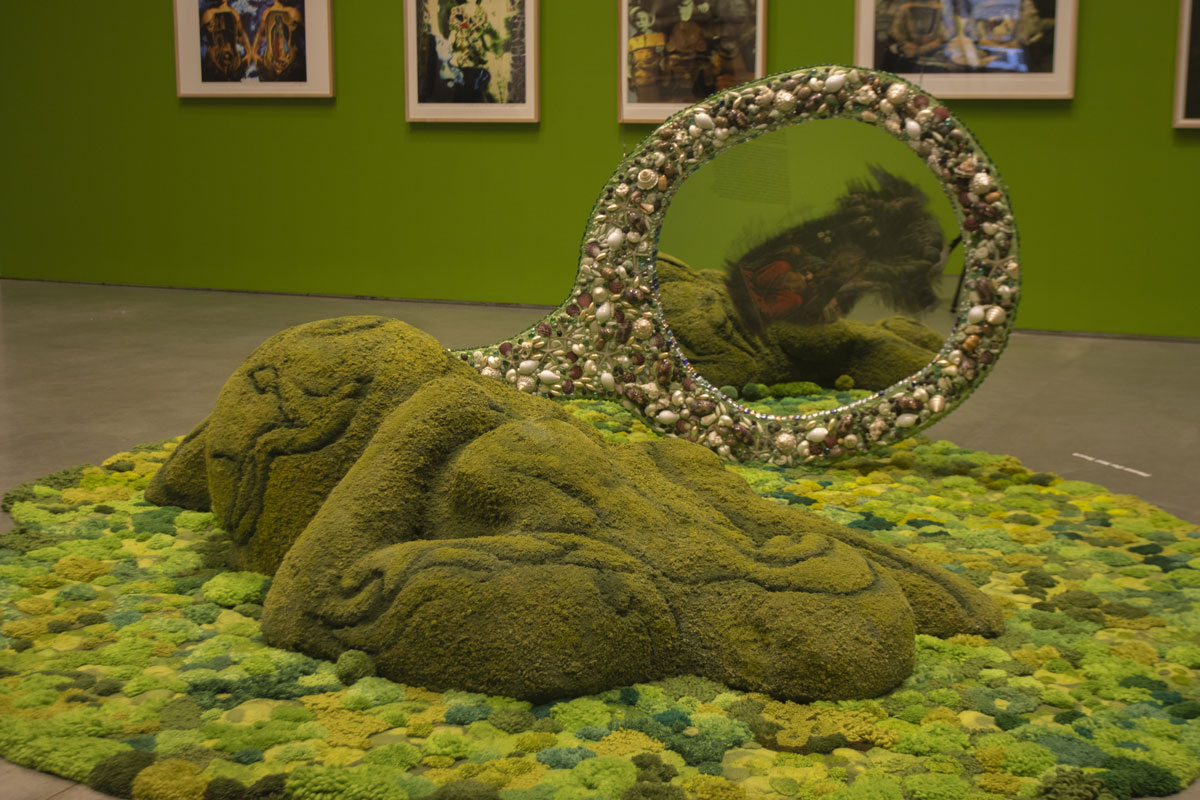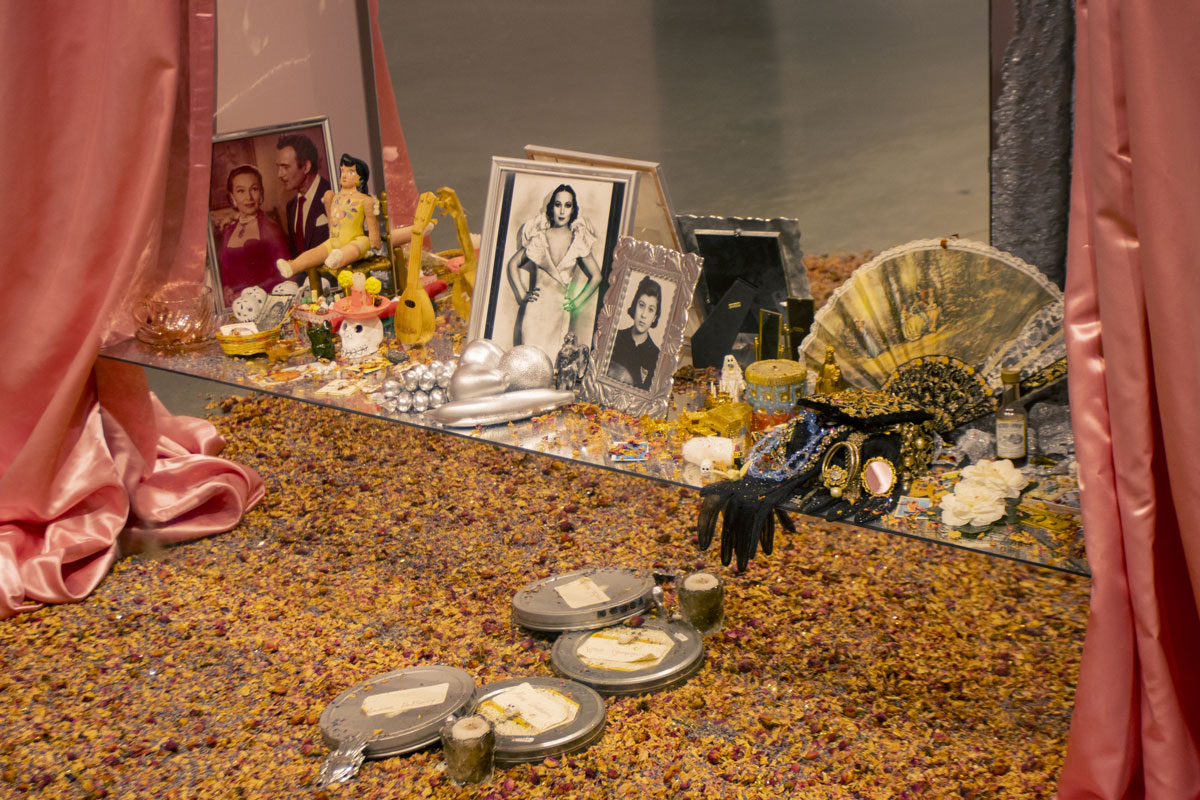Sometimes I forget my own advice, which is to never accept a photograph of an artwork as a substitution for the real thing. Even the flattest painting has a different impact in 3D space, whether that comes from the interaction of colors, unexpected scale or the satisfying detail of a taped-off edge. And installation work — well, I should know better.
I stepped into the Berkeley Art Museum and Pacific Film Archive’s magnificent retrospective Amalia Mesa-Bains: Archaeology of Memory with a handful of static, slightly murky images in my mind. I was wholly unprepared for the reality of her work, with its luxurious textures, vibrant color choices and dense arrangements of found and cherished objects. The scent of lavender drifted through the climate-controlled galleries. The show, co-curated by Laura E. Pérez and María Esther Fernández, is Mesa-Bains’ first retrospective, and a return to the Bay Area, where she spent much of her career.
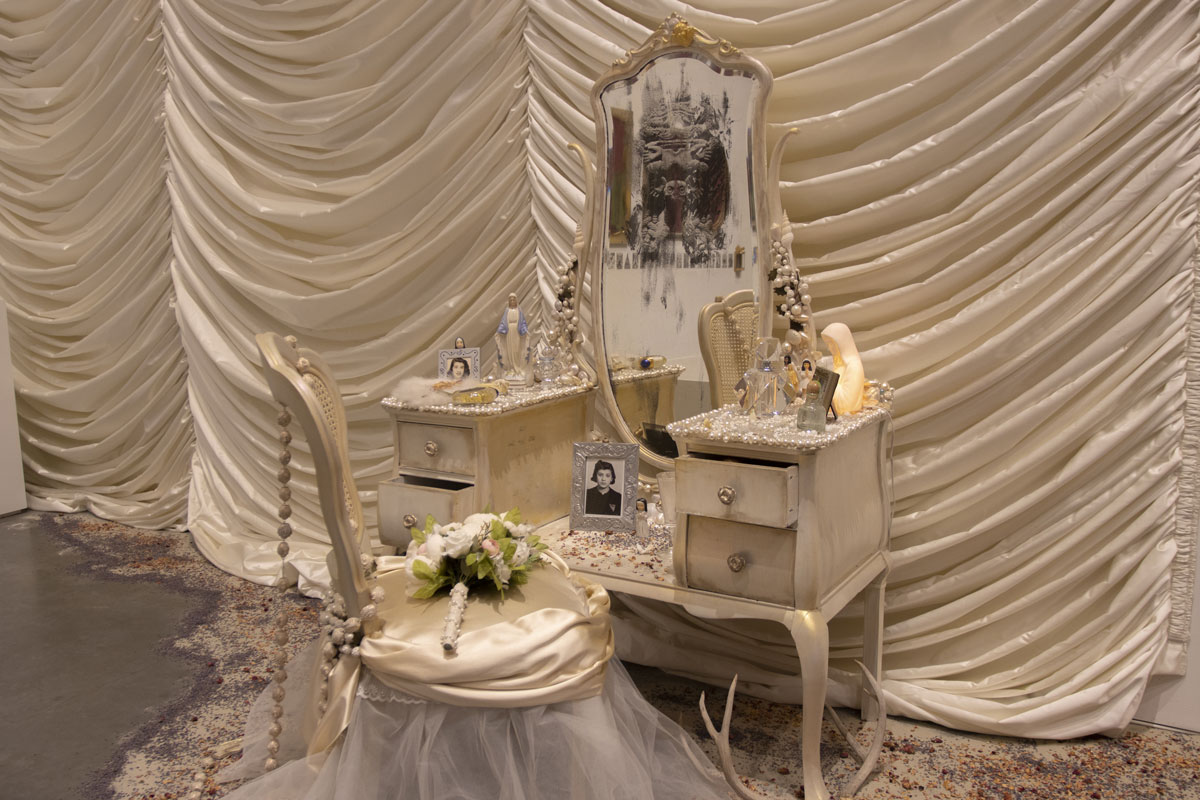
Archaeology of Memory opens with Venus Envy Chapter I: First Holy Communion, Moments Before the End (1993/2022), part of a series shown here in its entirety for the first time. This is not a gradual introduction to Mesa-Bains’ five-decades-long art practice, but a sudden submersion into an arrangement of object-filled vitrines, furniture, religious paraphernalia, wall works, handwritten text, a bauble-encrusted vanity and many, many mirrors.
That first gallery effected the same feeling I have in a well-stocked bookstore: “I’m never going to live long enough to absorb all of this information.” But we are not meant to read all the text, nor see all the images. In almost all of Mesa-Bains’ work, regardless of medium, there is a process of layering and obscuring. That unknowability becomes strategic. Mesa-Bains does the work of unearthing histories — Indigenous, Mexican, Chicanx, political, domestic, feminist — and merges them with her own memories, creating evocative amalgamations of object and symbol. For as complex and powerful as the work is, Mesa-Bains’ methods signal that there is still so much to uncover: more stories, more experiences, more structures to question and complicate.
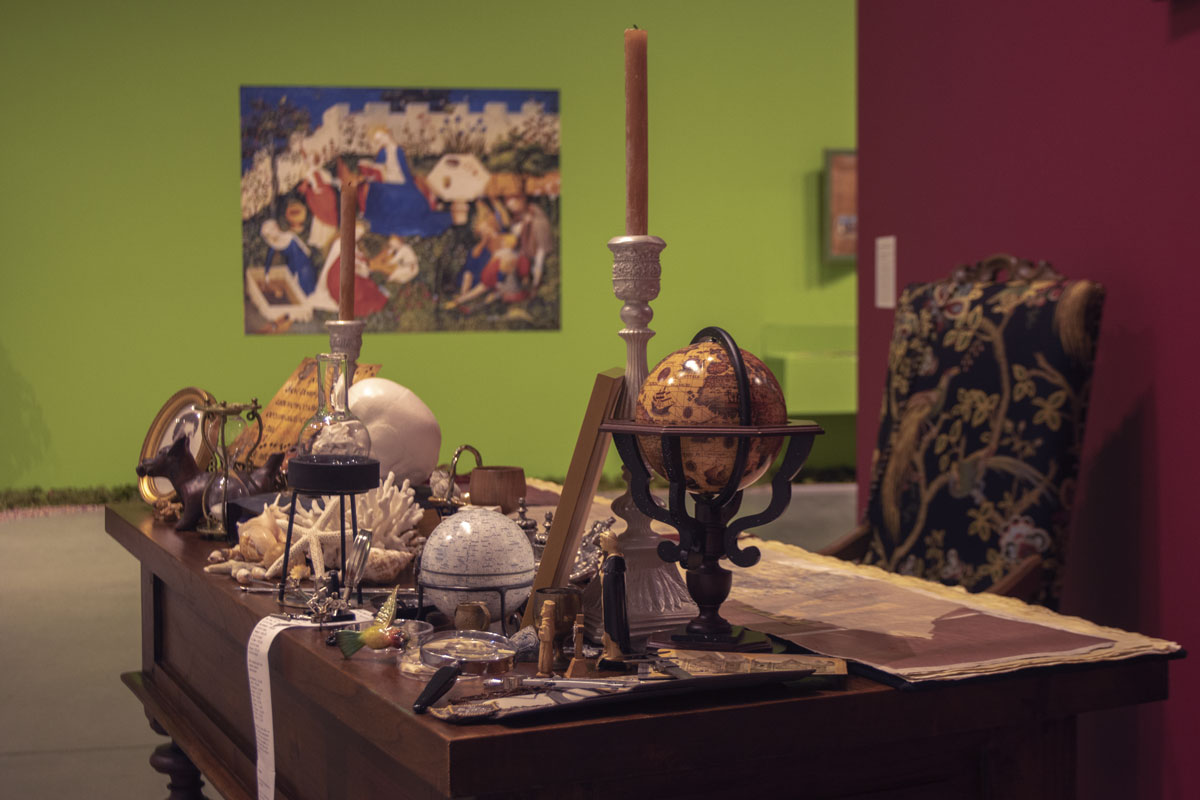
In The Library of Sor Juana Inés de la Cruz (1994/2021), from Venus Envy Chapter II: The Harem and Other Enclosures, Mesa-Bains imagines the desk of the 17th century Mexican writer, philosopher, poet and nun. Among magnifying glasses, globes and petri dishes dangles a receipt-like list of Latino populations in different metro areas across the United States, followed by prison populations and COVID statistics.
